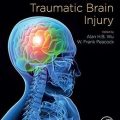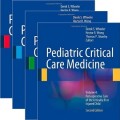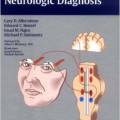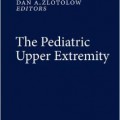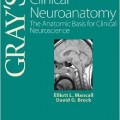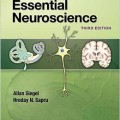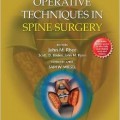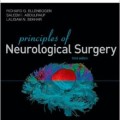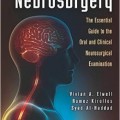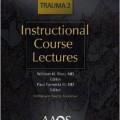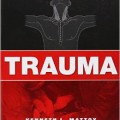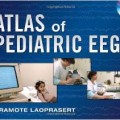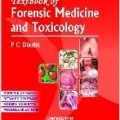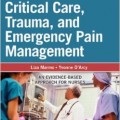دانلود کتاب راهنمای آسیب ضربه مغزی: ارزیابی و مدیریت
Manual of Traumatic Brain Injury: Assessment and Management, 2ed
provides an excellent road map to the many topics relevant in the diagnosis, treatment, and long-term management of individuals with TBI. As such, the book can serve either as a fine introduction for the uninitiated or as a valued reference for seasoned clinicians. I highly recommend [it]‚
Journal of Head Trauma Rehabilitation
This is a stellar quality book that will be beneficial for every member of the multidisciplinary team that is required to treat patients with TBI. It offers a concise but broad and informative view of the disorder, and can serve as an easy-to-read and access primary text. 4 Stars!
Doody’s Reviews
Now completely revised and updated, Manual of Traumatic Brain Injury: Assessment and Management, Second Edition is a comprehensive evidence-based guide to brain injury diagnosis, treatment, and recovery, delivered in a succinct format designed for targeted access to essential content.
This concise text, featuring internationally known contributors drawn from leading TBI programs, is organized into five sections. Part I discusses fundamental concepts needed to provide a context for clinical decision-making. Part II covers mild TBI, from natural history to sportrelated concussion, postconcussion syndrome, and more. Part III focuses on moderate to severe TBI and contains chapters on prehospital, emergency and ICU care, rehabilitation, community reintegration, management of associated impairments, and postinjury outcomes. Part IV covers the complications and long-term sequelae that may arise in patients with TBI, including spasticity, movement disorders, posttraumatic seizures, hydrocephalus, behavioral and sleep disturbances, and chronic traumatic encephalopathy (CTE). Part V focuses on special considerations and resources, including issues specific to selected populations or injury environments (military, pediatric, workers’ compensation and older patients), as well as return to work and medicolegal issues in TBI.
Comprehensively updated to reflect the current state of the art in this rapidly evolving field, this book is a must-have for neurologists, physiatrists, primary care physicians, mental health professionals, social workers, and other health care providers who treat TBI patients.
New to the Second Edition:
- Key Points section in each chapter crystallizes important clinical pearls
- New chapters cover anoxia complicating TBI, screening for emotional distress in TBI patients, management of chronic behavioral disturbances, andassistive technology
- Every chapter has been updated to reflect current evidence-based practice
About the Author
Contents
Chapter 1: Traumatic Brain Injury: Definitions and Nomenclature
Chapter 2: Essential Concepts in TBI Biomechanics and Neuropathology
Chapter 3: Characterization of Traumatic Brain Injury Severity
Chapter 4: Epidemiology of Traumatic Brain Injury
Chapter 5: Injury Prevention
Chapter 6: Concussion and Mild Traumatic Brain Injury: Definitions, Distinctions, and Diagnostic Criteria
Chapter 7: Mild Traumatic Brain Injury:Initial Medical Evaluation and Management
Chapter 8: The Natural History of Mild Traumatic Brain Injury
Chapter 9: Sport-Related ConcussionI : Injury Prevention and Initial Assessment
Chapter 10: Sport-Related Concussion II: Managing the Injured Athlete and Return-to-Play Decision Making
Chapter 11: Second Impact Syndrome
Chapter 12: Structural and Functional Brain Imaging in Mild Traumatic Brain Injury
Chapter 13: Selected Somatic Disorders Associated With Mild Traumatic Brain Injury: Fatigue, Dizziness and Balance Impairment, and Whiplash Injury
Chapter 14: Cognition in Mild Traumatic Brain Injury: Neuropsychological Assessment
Chapter 15: Postconcussion Syndrome: Diagnostic Characteristics and Clinical Manifestations
Chapter 16: Postconcussion Syndrome: Symptom Management
Chapter 17: Confounding Factors in Postconcussive Disorders
Chapter 18. Recognizing Manifestations of Posttraumatic Stress Disorder in Patients With Traumatic Brain Injury
Chapter 19: Field Management: Prehospital Care
Chapter 20: Emergency Department Management and Initial Trauma Care Considerations
Chapter 21: Imaging in Moderate to Severe Traumatic Brain Injury
Chapter 22: Neurosurgical Management of Skull Fractures and Intracranial Hemorrhage
Chapter 23: The Neurointensrve Care Unit: Intracranial Pressure and Cerebral Oxygenation
Chapter 24: Anoxia Complicating TBI
Chapter 25: The Role of Neuroprotective Interventions in Traumatic Brain Injury
Chapter 26: Nutritional Considerations
Chapter 27: Initial Rehabilitation Interventions in the Acute Hospital Setting and Transitioning to the Next Level of Care
Chapter 28: Disorders of Consciousness
Chapter 29: The Role of Specialized Brain Injury Units in the Rehabilitation Process
Chapter 30: Rehabilitation Nursing
Chapter 31: Physical Therapy: Mobility, Transfers, and Ambulation Vestibular Rehabilitation
Chapter 32: Occupational Therapy: Activities of Daily Living, Driving, and Community Reintegration
Chapter 33: Speech Therapy: Dysphagia and Cognitive Communication Impairments
Chapter 34: Neuro-Visual Processing Rehabilitation for Visual Dysfunction
Chapter 35: Cognitive Impairment: Characterization and Management
Chapter 36: Behavioral Impairment: Recognition and Management
Chapter 37: Rational Neuropharmacology in Traumatic Brain Injury
Chapter 38: Pain Management in Persons With Traumatic Brain Injury
Chapter 39: Assistive Technology in Traumatic Brain Injury
Chapter 40: Practical Guidelines for Prognostication After Traumatic Brain Injury
Chapter 41: Sexuality After Traumatic Brain Injury
Chapter 42: Assessment of Decision-Making Capacity
Chapter 43. Community Integration
Chapter 44: Cranial Nerve Palsies
Chapter 45: Hydrocephalus
Chapter 46: Posttraumatic Seizures
Chapter 47: Heterotopic Ossification
Chapter 48: The Management of Endocrine Dysfunction in Traumatic Brain Injury
Chapter 49: Autonomic Dysfunction
Chapter 50: Movement Disorders
Chapter 51: Spasticity in Traumatic Brain Injury
Chapter 52: Screening for Emotional Distress After Traumatic Brain Injury
Chapter 53: Chronic Neuropsychiatric SequelaeI : Mood Disorders
Chapter 54: Sleep Disturbances
Chapter 55: Chronic Neuropsychiatric Sequelae II: Behavioral Disturbances
Chapter 56: Cumulative Effects of Repeated Mild Traumatic Brain Injury and Chronic Traumatic Encephalopathy
Chapter 57: Posttraumatic Headache
Chapter 58. Neurovascular Complications After Nonpenetrating Brain Injury
Chapter 59: Pediatric Considerations in Traumatic Brain Injury Care
Chapter 60: Special Considerations in Caring for the Workers’ Compensation Patient
Chapter 61: Developing a Life Care Plan
Chapter 62: Traumatic Brain Injury in a Forensic Context
Chapter 63: Alcohol Misuse and Traumatic Brain Injury
Chapter 64: Ethical Considerations
Chapter 65: Special Considerations for Military Personnel: Unique Aspects of Blast Injury
Chapter 66: Treatment and Rehabilitation Services for Mild to Moderate Traumatic Brain Injury in the Military
Chapter 67: Management of Traumatic Brain Injury in the Older Adult
Chapter 68: Complementary and Alternative Medicine in Traumatic Brain Injury
Chapter 69: Return to Work Following Traumatic Brain Injury
Chapter 70: Resources for Traumatic Brain Injury Survivors and Caregivers
Chapter 71. Living With Traumatic Brain Injury: From a Survivor’s Perspective
لینک کوتاه : https://bookbaz.ir/?p=34052
نویسنده : Felise Zollman MD FAAN FAAMA
ناشر : Demos Medical; 2 edition
سال انتشار : 2016
زبان کتاب : انگلیسی
نوع فایل : PDF
تعداد صفحات : 609
(ISBN) شابک : 162070093X
قیمت کتاب درآمازون : $75.78
حجم فایل : $75.78




